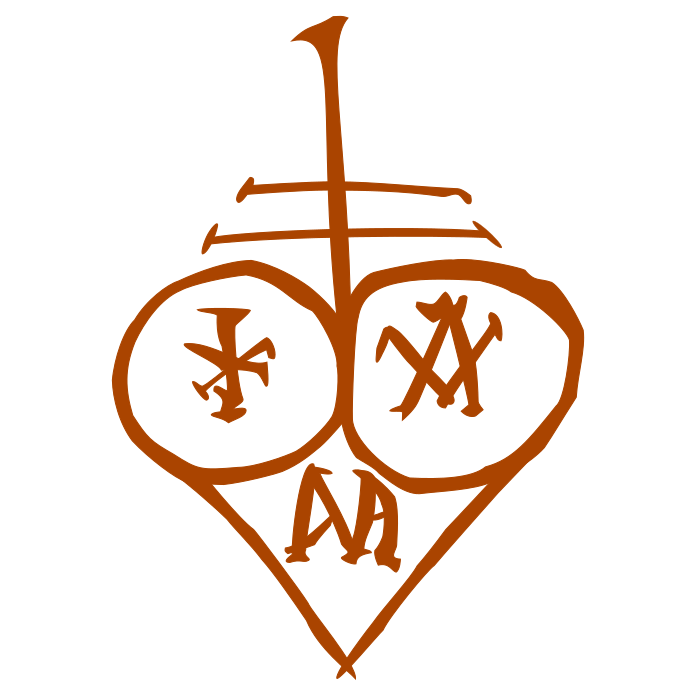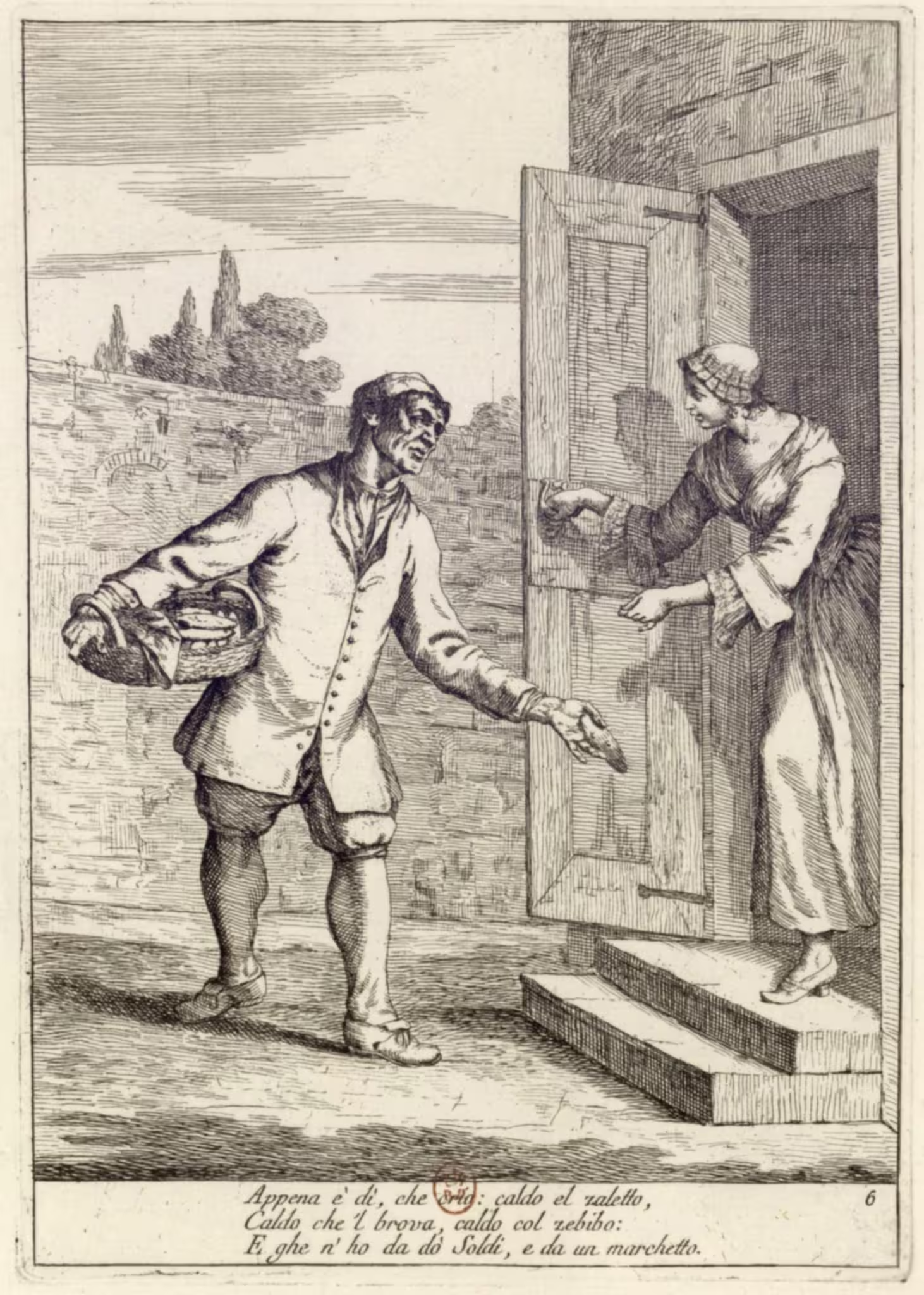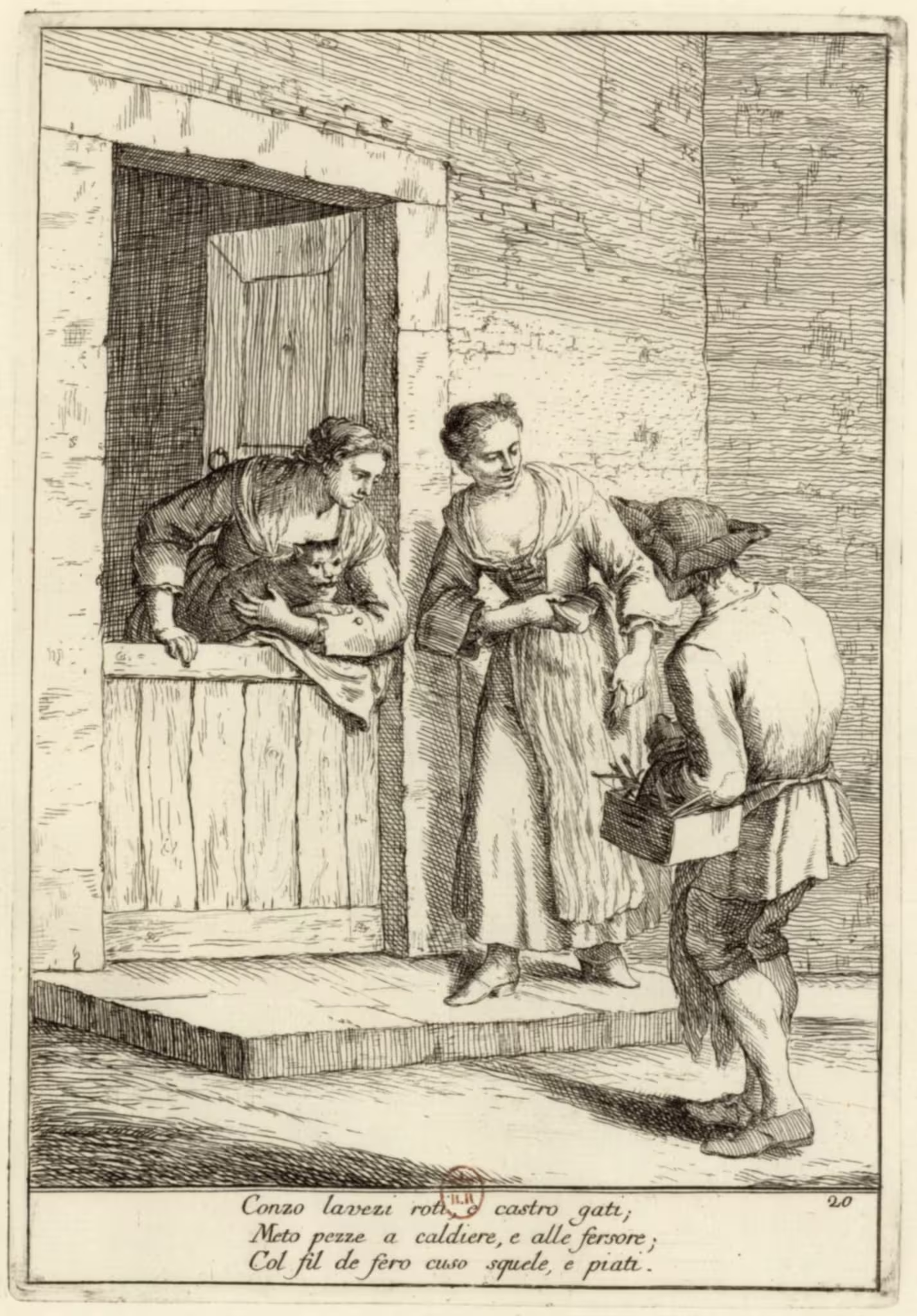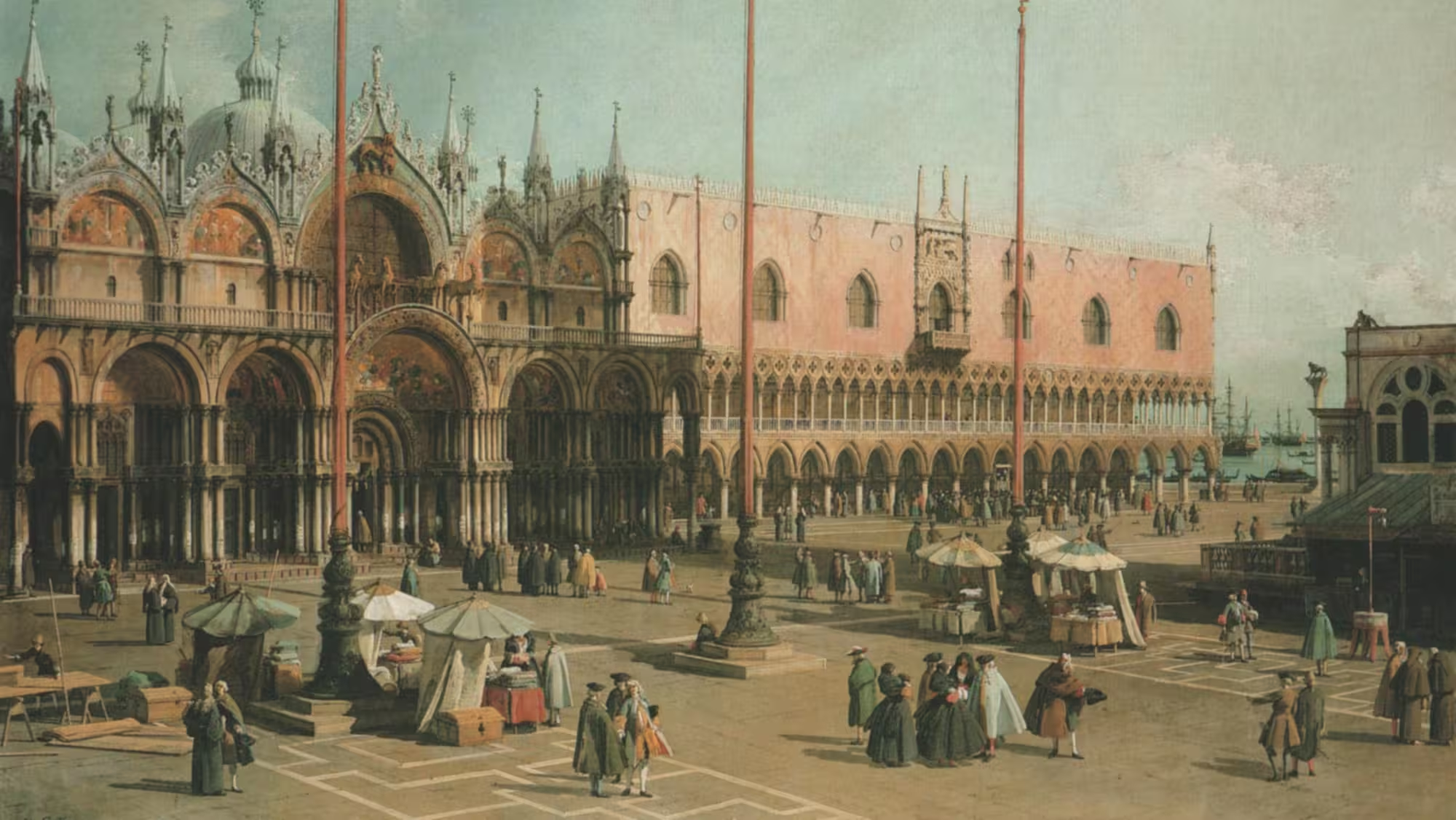In the Palazzo Ducale, the Doge lies dead.
His master of ceremonies, the Cavaliere, leaves the Doge’s rooms on the second floor of the palace, goes up the stairway to the hall of the Collegio above.
Venetian Stories
This post is an issue of our newsletter — Venetian Stories — which goes out every few weeks, to keep in touch and share stories and titbits from and about Venice and its history.
The Collegio is complete: the six councillors of the doge and the three orders of the Savi, sixteen between them.
«Serenissimo Principe!» declares the Cavaliere, «The Serenissimo of immortal memory has passed from this to a better life, mourned by all orders for his rare and singular virtues. I present to Your Serenity the royal seal and the keys of the treasury by command of his Most Excellent relatives, and as the duty of my most humble ministry.»
«It is with great regret,» replies the senior member of the Collegio, «that we heard of the death of the Most Serene prince of so much piety and goodness; however, we will make another.»
The death of a doge
The above is the opening scene of one of the more absurd spectacles of the late Republic of Venice.
In the Sala dello Scudo — just outside the doge’s rooms and the only place in the palace where his family coat of arms could be displayed — a platform was prepared, draped in black, with the coffin in the middle.
At the corners, large candelabras held burning torches.
The standard of the Scuola di San Nicolò dei marinai stood at the side of the head, and the coat of arms of the deceased doge, upside-down, was at the feet of the coffin.
Dressed in a red dogalina, cloak of gold brocade and a mozzetta of ermine, with the corno ducale likewise of brocade, hands covered in white gloves, golden spurs at his heels, and with a rapier in its sheath on his right side, lay a statue of the dead doge.
In the afternoon, the coffin was moved to the larger Sala del Piovego on the first floor, with a solemn procession along the corridors of the palace.
All the highest offices of the state participated: the Consiglio del Doge, the three Cai della Quarantia, the Cancelliere Grando, the three Consiglieri Inferiori, the Ordinary Secretaries of the Senate, the Extraordinary Secretaries of the Chancellery, the Gastaldi of the doge, the clergy of the Basilica di San Marco, the Comandadori, the Scudieri and the Cavaliere.
Twelve arsenalotti carried the coat of arms of the doge, and another twelve members of the Scuola di San Nicolò dei marinai preceded the procession with lit torches.
The platform draped in black, the coffin with the statue, the banner of the Scuola di San Nicolò dei marinai and the upside-down coat of arms were all placed as they had been in the previous hall.
The canons of the Basilica di San Marco chanted the vesper of the dead.
Three days in the palace
For the next three days, the display would remain in the Sala del Piovego.
Each day, a funerary mass was heard in the Basilica di San Marco.
It wasn’t, however, all doom and gloom. It was also politics. The Head of State was dead, and preparations for the election of the next doge had to start.
Two temporary magistracies were elected.
The office of Inquisitori sopra il doge defunto — the Inquisition of the dead doge — sprang into life. The Inquisitors started going through all the paperwork of the deceased doge, and if they found any irregularities, the family would have to pay. If the doge was above such matters in life, in death he was not.
Likewise, the Correttori della promissione ducale studied how the dead doge had acted during his reign compared to the written oath he had sworn when elected. Each newly elected doge swore an oath, called the Promissione ducale — the Doge’s promise. The task of the correttori was to identify eventual problems in the text before the next doge was elected, and offer the appropriate suggestions to the Maggior Consiglio.
While the Inquisitori could work for years, the correttori had little time. The corrected promissione ducale had to be ready before the next doge was elected.
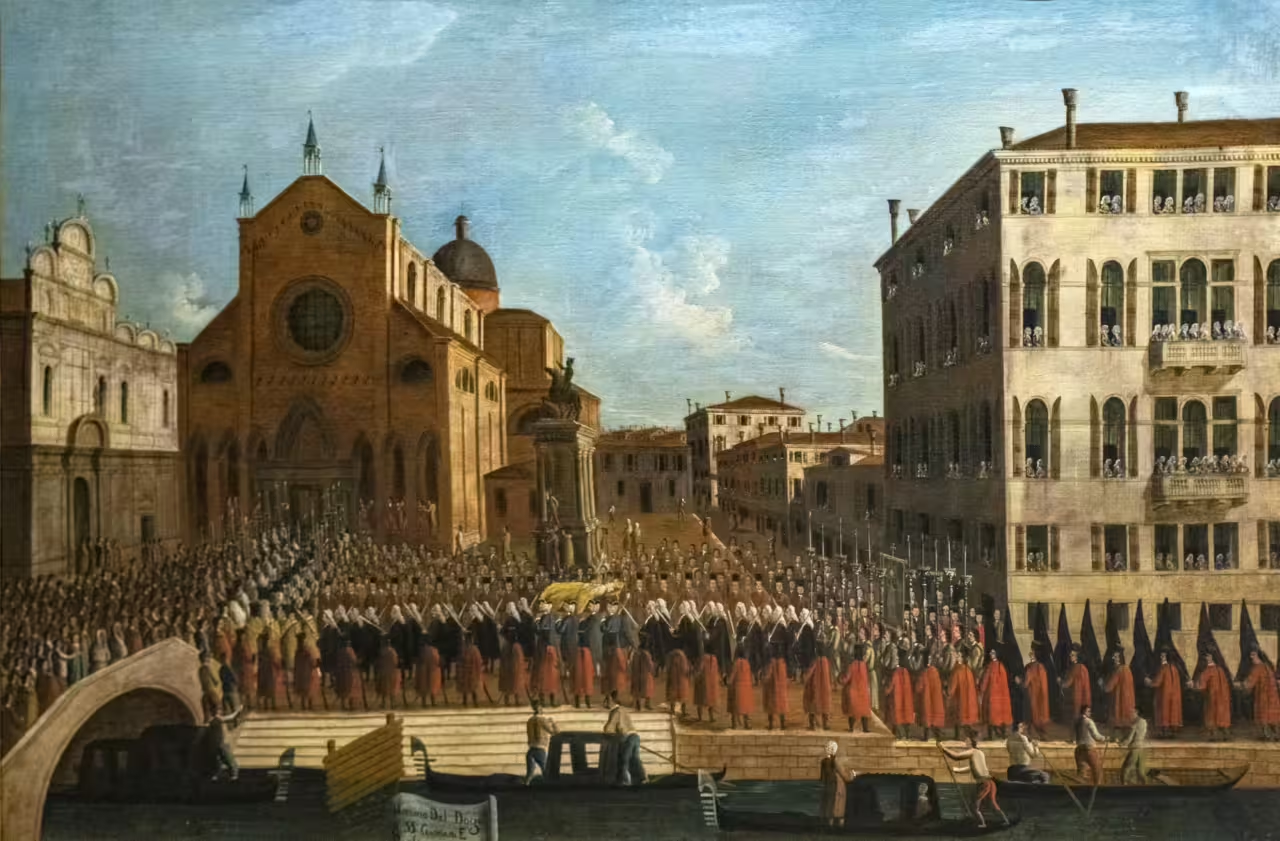
The procession
Three hours before evening on the third day after the death of the doge, the funerary procession set out from the Palazzo Ducale.
First came all the priests of the city, then the members of the Scuole Grandi carrying double candlesticks, then all the captains of the ships of the navy, and the craftsmen of the Arsenale, followed by the twelve members of the Scuola di San Nicolò dei marinai with torches, and the twelve with the coat of arms of the doge.
The coffin with the statue of the dead doge was carried under a canopy.
Followed the coffin came the relatives of the doge, foreign ambassadors, the Councillors of the doge, the Heads of the Quaranta, the Avogadori, the Heads of the Ten, the Censors, the Great Chancellor, the Inferiors, the Secretaries of the Senate, and the entire Senate.
First the process did the tour around the Piazza San Marco, like the doge had done when elected, but when the coffin arrived in front of the Basilica di San Marco, the procession stopped and the bearers lower the coffin to the ground, and raised it again, nine times.
When elected, the doge had accepted the election inside the church, and he had been presented to the people for the first time inside the church, and this was his goodbye to the Basilica which had been his chapel for the duration of his reign.
The funeral
The entire procession then moved to the Basilica dei SS Giovanni e Paolo, where the religious part of the funeral took place.
The coffin was placed centrally on a platform, surrounded by torches. Mass was heard, and eulogies were read by the renowned learned men of the city.
Once the ceremony was over, the coffin was taken to the Cappella del Rosario in the back of the church. Here, the clerics of the basilica stripped the statue of all ducal insignia, which they handed to the relatives in return for a donation to the church of ten ducats.
The face mask and the wig of the statue belonged to the Guardiano of the Scuola Grande di San Marco, located just besides the church.
Thus ended the reign of a Venetian doge.
But where’s the body?
To honour a dead doge, the Venetian republic held a sumptuous funeral for a statue of the doge.
What happened to the body of the dead doge?
On the same day as the initial scene of the Cavaliere formally announcing the death of the doge to the Collegio — which was essentially the government of Venice — the body of the doge was taken back to his family, without much fanfare.
His last journey was accompanied by the canons of the Basilica di San Marco — which had for all purposes been his chapel — and by the famiglia nobile of the doge — his private household staff in the palace. In short, people he had appointed, who had worked for him.
The actual funeral was held privately in whichever church that family used for their burials.
This doesn’t mean that there wasn’t any pomp and ceremony at that funeral, but it was a private funeral for a private citizen. Once dead, he was no longer doge.
Why, Oh Why?
It wasn’t always like that.
The doges from the 1300s and 1400s had real funerals, mostly in line with the account above, but without the statue. Some later doges had too.
What happened initially was the plague. Doge Giovanni Mocenigo, elected in 1478, lost his wife Taddea Michiel to the plague in 1479. In 1485, during a major outbreak, the doge himself died of the disease.
The Venetians at the time — and most others — had some rather vague ideas about contagious diseases. However, they did understand very well that it was not a good idea having the corpse of a plague victim on display in the palace for three days, and then carry it around the city in procession.
They therefore saw to a swift burial of the dead doge, and then proceeded with the traditional state funeral using an effigy.
Once the possibility was there, some doges even chose such a burial themselves. Doge Leonardo Donà, in 1612, refused the embalming and opted for a private funeral, and so did Antonio Priuli in 1623.
At the end of the 1600s it had become the norm, and people joked about it. For the funeral of Giovanni Corner II in 1722 some unknown poet wrote:
Sacco de pagia e maschera de cera
El cadavere del Serenissimo
Che averessi zurà certo e certissimo
Ch’el fusse là in te l’aria e in te la ciera.
Which is more or less — in my translation:
A sack of straw and a mask of wax
The cadaver of the Most Serene
That you would have sworn sure and certain
That he was there with such a look and such a teint.
For the Venetian state, on the other hand, having a public state funeral for a statue of the doge, served to emphasise that the doge as a person and the doge as an institution of the state, were not the same.
Hence, the «however, we’ll make another.»
Related articles
- Doge in the Lessico Veneto by Fabio Mutinelli.
- Doge in the ASV Indice by Andrea da Mosto.
- State institutions of the Republic of Venice
Bibliography
Da Mosto, Andrea. I dogi di Venezia con particolare riguardo alle loro tombe. Editore Ferd. Ongania, Venezia, 1939.
Mutinelli, Fabio. Lessico veneto che contiene l'antica fraseologia volgare e forense … / compilato per agevolare la lettura della storia dell'antica Repubblica veneta e lo studio de'documenti a lei relativi. Venezia : co' tipi di Giambatista Andreola, 1851.
